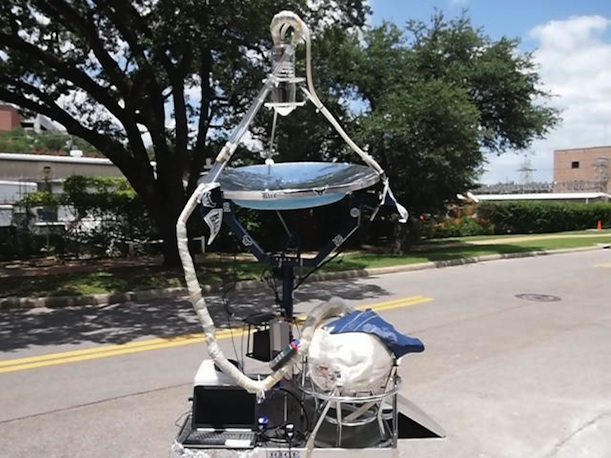This New Device Can Sterilize Medical Tools Using Solar Power Alone
An invention called the solarclave could help prevent millions of annual infections that result from improperly cleaned medical equipment
An invention called the solarclave could help prevent the millions of annual infections that result from improperly cleaned medical equipment. Photo by Oara Neumann
The autoclave—a device that generates steam to kill bacteria and sterilize medical equipment—was invented way back in 1879. But 134 years later, infections that develop as a result of improperly sterilized medical equipment are still estimated to affect hundreds of millions of people each year, mostly in the developing world. In places with limited access to autoclave technology, along with an inconsistent power supply, many people still undergo surgery with equipment teeming with bacteria, viruses and other pathogens.
The good news, though, is that this problem could be solved soon, thanks to a device called a solarclave, developed by a group of engineers led by Oara Neumann and Naomi Halas of Rice University. Their device, described in an article published today in Proceedings of the National Academy of Sciences, harnesses the power of the Sun—along with the unique characteristics of specific nanoparticles—to sanitize medical equipment and other instruments without any need for an external electricity source.
The researchers weren’t the first team to have the idea of using solar power to sterilize equipment, but this is the first functioning prototype that has passed standard FDA-level sterilization tests. Conventional autoclaves use electricity to produce steam, but this device does so by relying on metal and carbon nanoparticles (tiny particles that as small as one ten-thousandth of a centimeter in diameter) that are scattered in an aqueous solution.
The nanoparticles’ thermodynamic characteristics cause them to absorb energy much faster than the surrounding liquid, generating a large temperature difference as sunlight is collected by mirrored dish and its heat is funneled into the solution. The heat is then transferred to the water molecules that are adjacent to the nanoparticles and converts them directly into steam. This design allows the conversion of solar power into steam in an extremely efficient manner—only 20 percent of the energy is used to raise the temperature of the liquid, and the remaining 80 percent helps to produce and sustain the steam bath.
Unlike when water is normally boiled and turned into steam, the nanoparticles are able to generate substantial amounts of steam at 70 degrees Celsius, when the solution is still far below its boiling point (some steam was even generated when the researchers put the fluid capsule in an ice bath, keeping it just above zero degrees Celsius). As a result, the solarclave can perform what is normally an extremely energy-intensive process—sterilizing medical equipment—using the limited intensity of solar power alone.
The researchers used this technology to produce two related prototypes that can both operate off the grid. One is a closed-loop system designed to sterilize medical equipment and other relatively small objects; the other allows for inputs and is designed to sterilize human and animal waste to reduce the spread of disease, an ongoing problem in developing countries. If operated three times a week, the researchers estimate that it can process the urine and feces produced by a family of four adults.
The prototypes were tested by their efficacy in killing Geobacillus stearothermophilus, a type of bacteria that grows in hot springs and other warm environments, and thus is more difficult to remove via heating than most other types of microbes. Both of the solarclaves passed the test, killing all the bacteria in the sample over the course of 30 minutes.

In tests, the solarclave effectively killed bacteria, indicating it could successfully sterilize medical equipment. Image via Flickr user mynameissharsha
If this sort of technology can be produced on a mass scale, it has the potential to help greatly reduce the amount of infections worldwide. The nanoparticles aren’t consumed during the sterilization process, so they can be reused indefinitely, and relatively small amounts of water are used during each cycle. The researchers also sought to use low-cost components whenever possible, but because the device is still in the prototype stage, it’s hard to say what the final price tag would be.
Barring issues of cost, the solarclave can potentially be used in all sorts of circumstances where access to electricity is the main limitation. The most immediate applications are sterilizing medical equipment and human waste, but the researchers speculate that the same sort of technology could eventually be used to purify water and limit the spread of bacteria in food products. The design’s remarkable efficiency in producing steam, they say, could someday even be used in the generation of electricity.
/https://tf-cmsv2-smithsonianmag-media.s3.amazonaws.com/accounts/headshot/joseph-stromberg-240.jpg)

/https://tf-cmsv2-smithsonianmag-media.s3.amazonaws.com/accounts/headshot/joseph-stromberg-240.jpg)